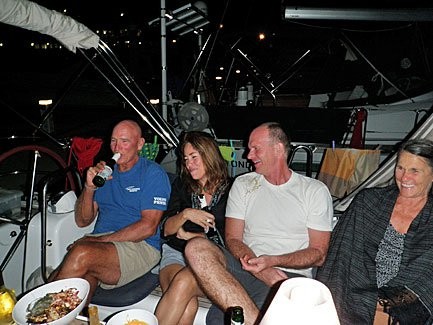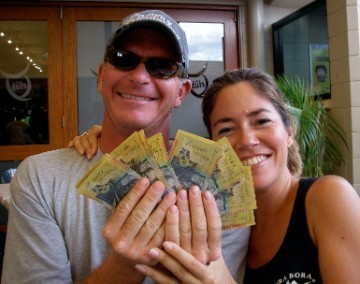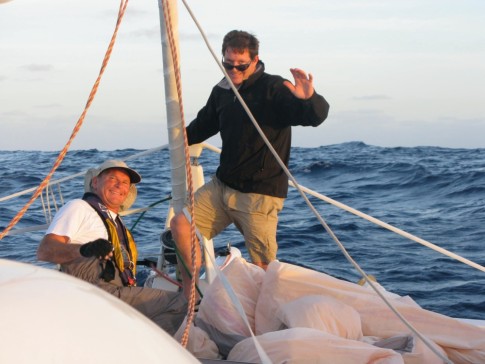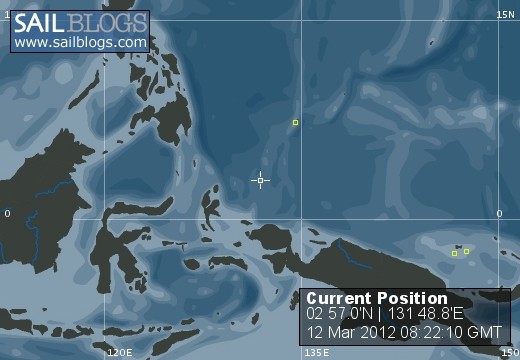
Endless Summer
Endless Summer is a 43ft Ian Farrier cruising catamaran.
12 March 2012 | Helen Reef
12 March 2012 | Helen Reef
12 March 2012 | Palau
12 March 2012 | Palau
12 March 2012 | Palau
12 March 2012 | Palau
12 March 2012 | Palau
12 March 2012 | Palau
15 November 2011
16 October 2011
30 July 2011 | Kavieng, and Manus Province, Papua New Guinea
30 July 2011 | Kavieng, and Manus Province, Papua New Guinea
30 July 2011 | Kavieng, and Manus Province, Papua New Guine
30 July 2011 | Kavieng, and Manus Province, Papua New Guinea
30 July 2011 | Kavieng, and Manus Province, Papua New Guinea
30 July 2011 | Kavieng, and Manus Province, Papua New Guinea
30 July 2011 | Kamatal Island, Louisiades, PNG
30 July 2011 | Kamatal Island, Louisiades, PNG
29 July 2011 | 10 56'S:152 42'E, Louisiade Achipelago
28 July 2011 | Panasia Island, Louisiades, PNG
Trading with the locals
27 July 2011 | 11 07'S:152 19'E, Louisiade Achipelago
Steve
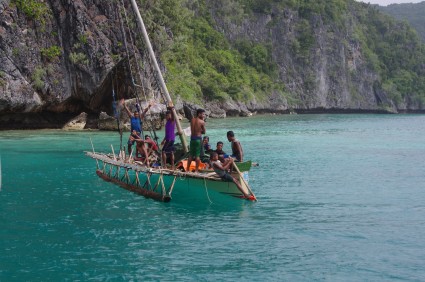
After resting and exploring the Duchateau islands, we sailed the short distance to Panasia Island where we entered the reef pass and anchored below the incredible 500 foot high limestone cliffs. The cliff ended in an overhang just above the water, where the waves had eroded under the great wall of stone. Trees, vines, and flowering plants clung to the cracks and crevices in the limestone creating a beautiful and dramatic site. Soon after anchoring a man paddled out in his canoe and introduced himself as Mackenzie. He was our first encounter with the friendly local people. Mackenzie asked if we would like to trade for fruits and vegetables and we begun what would become a regular routine. We would arrive in an anchorage and soon be visited by one or more canoes. You could see the canoes hitting the water as we approached the island. The people would be children, men, and women. Some spoke very good English, and others not much at all. Their clothing was generally falling apart. The children often had open soars on their legs and buttocks, and the adult's legs were covered in scars. Our visitors would ask if we would like to trade and show us a bag of limes, or a woven basket with papaya or yams. We would ask what they would like to trade and in a shy and polite tone they would say, "whatever you have is OK'. Often they would ask for sugar as they were having a shortage. Sometimes they would ask for children's clothing, T- shirts, rice, fishing hooks, or occasionally cigarettes. We were only asked for money on one island when some men brought out some wooden carvings. We ended up trading part money and part fishing gear and T-shirts for the carvings as we had little local currency. Sometimes the stream of canoes coming out to the boat would last most of the day. People would paddle out and just hang off the back of the boat. They would smile and giggle, or just float around. Sometimes they would ask to trade, sometimes not. Some people asked to see our boat, and we would generally show them around. On these occasions we could really feel the chasm between our material wealth and their own. They paddled out in a borrowed hopelessly leaking canoe, wearing filthy tattered clothing. They would sit in our cockpit sipping sweet tea with their eyeballs practically bursting out of their head. Everywhere they looked they saw something marvelous. They would just look around at the walls, the floor, the seats, the shiny stainless steering wheels, the navigation instruments, and all the electronic gadgets. When we in turn visited their homes, we understood just how different our worlds were. They lived in huts made of rough cut wood or bamboo frame, with walls of w oven palm fronds. They slept on the floor, or on wooden benches around the interior walls. The few large pots and pans were neatly stacked in one corner or on a bench. I became very aware of my relative material wealth as my every move and accessory was observed with the greatest interest. When I would remove my backpack, or Manjula would take out her camera there was almost an audible gasp or sigh of amazement and interest. The children giggled with delight at the gift of a soccer ball, or some stickers, and the adults seemed equally as pleased with T-shirts, fishing hooks, rice, sugar, coffee, tea, and the like. One time a local politician paddled out in a canoe and asked us to make him 5 copies of a poster for the upcoming campaign. Another time a man asked me to call his brother for him. He wanted his brother to send four pairs of soccer shoes for the boys on his team. He said he would pay his brother in shell necklaces for the shoes. Several people asked me to send an e mail to Australian sailors from the previous season requesting various items be brought to them the next time the yachts visited. Occasionally someone would ask for medicine. One difficult day, we accompanied a man to his house to see his young child. His boy, about three years old, but much smaller than an American three year old, was suffering with open soars all over his legs, feet, and buttocks. We brought our little first aid kit, but as we sat with the family of five on the floor of their small hut, we explained that his son needed medicine we did not have. Meanwhile another son was sitting with us and showed us a badly infected toe. It was twice the size of his normal toes and obviously infected. With some reluctance the father was persuaded to take that boy to the clinic as well. We were told that the treatment would be free, but that the boat ride over to the island was the thing that required money - money that he did not have. We gave him the money that he needed to take his children to the clinic on the main island. It was about 10 US dollars. As we made our way from island to beautiful island in the Louisiades, the visits from the locals became the dominant experience. We snorkeled the fantastic coral reefs, visited huge limestone caves, collect shells on the white beaches, and generally explore the islands, but we spent much of our time with the parade of locals. This was an unexpected element to our visit. We enjoyed meeting the locals very much, but felt woefully unprepared to meet what seemed like their great need - in some places even for food. Also the hours spent every day from early in the morning until late in the afternoon were tiring. We found ourselves trying to find an island that we thought would be uninhabited. It was on such a day that we discovered Kamatal. And that is the subject of our next post.
Comments
| Vessel Name: | Endless Summer |
| Vessel Make/Model: | F-41 sailing catamaran |
| Hailing Port: | San Francisco, California |
| Crew: | Steve May and Manjula Dean |
| About: | |
| Extra: |
Australia to Indonesia 2011
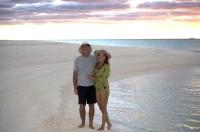
Who: Steve May and Manjula Dean
Port: San Francisco, California
Here is our current location
Favorites
- Papua New Guinea Video
- 21 DAYS TO THE SOUTH PACIFIC, (SHORT FILM)
- Invitation to share our adventure (TRAILER)
- Tanna Island Rescue video (SHORT FILM)
- Tahiti Morea Sailboat Race (SHORT FILM)
- Monterey Bay Aquarium (Educate yourself)
- Ocean Conservancy (Get Involved)
- FishWise (Sustainable Fish Choices)
- Whale study and conservation








